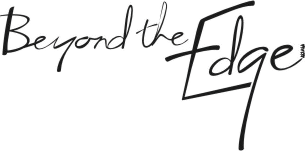Screenwriting and facilitation: it’s all in the cut
 “It’s all in the cut.” This is a description of where the magic happens in movies. It starts with a writer, and an idea, a story, and a screenplay. Then the director gets their hands on it, the actors do their stuff, and finally it is cut together into a movie that we will watch – and either love or hate, or be indifferent to.
“It’s all in the cut.” This is a description of where the magic happens in movies. It starts with a writer, and an idea, a story, and a screenplay. Then the director gets their hands on it, the actors do their stuff, and finally it is cut together into a movie that we will watch – and either love or hate, or be indifferent to.
I still hanker for a career as a screenwriter – I know, leaving it a bit late! I’ve signed up for a FutureLearn MOOC (massive open online course) on Screenwriting. It’s only two weeks – something I can manage right now – and a reminder of other more comprehensive screenwriting classes I’ve taken. Screenwriting – and story – are recurring themes in my facilitation (my current, and continuing career) so there must be something there that attracts my interest.
Watching movies is not the same as reading a novel. Self evident? Maybe. The big difference is in what we know. A novel can take us into the heads of characters – we can know what they are thinking. In movies we can only see the consequences of those thought, people’s actions. This is also true when facilitating – we can’t know what any person is thinking, we can only see how they are acting, what they are doing. This leaves us open to mis-interpreting or making assumptions. Hence the question of how to deal with a particular situation or person is always hard for me to answer. It’s hard enough when it happens directly to me, when I’m facilitating. The improv principle of notice more is directly about this. It’s about noticing everything that is going on, including the protagonist’s behaviour. It’s also about noticing ourselves and how we might be contributing to the situation. 
The other big question in facilitating is about planning and knowing what to do. Let me explain why this puzzles me.
Last week, I was keen to see the Wren Library at Trinity College, Cambridge. There was a queue. A long one. They only allow 15 visitors at a time. I’m not a fan of queuing but really wanted to see the library so there was no other choice. I was standing behind a young couple – he was from Australia, she was from the US – and they were chatting. After about an hour I realised that they had been chatting constantly. (Yes, still in the queue!) No pauses. No silences. Just one topic after another like a stream of consciousness. I was exhausted just listening to them. As someone who can’t talk like this I was intrigued. “I wonder how they do that?” I thought. To them, it would be a nonsense question. That’s just what they do. I feel the same about designing a workshop – it’s just what I do. That’s not very helpful to someone who wants to know the ‘secret’ though.
Here’s what I do know about this process (i.e., what goes on in my head – like in a novel). I think about it a lot. I play scenarios in my head – not specific “he said” “she said” situations – more general stuff of seeing people do certain activities. Some I reject immediately – too long, inappropriate, the size of the group won’t work. I write down on mini-stickies each of the activities or things that I might do. I create a plan on a single sheet of paper (or one sheet per day) – times down the side (only key times – start, finish, breaks, lunch). That leaves me with big chunks of empty space to fill. These I fill with the stickies. That’s my plan. It’s enough.
It’s enough because I have it to fall back on if I need to. It’s also redundant as soon as I make it – because no matter what I plan, there will be changes. Something will happen in the first session that will suggest what needs to really happen next. I’ll learn something about the participants, or their situation, or what they really want to achieve and I’ll find something different that will help them. Or not. Sometimes it goes as I planned. Not often though.
So when the University of East Anglian tutors talk about the craft of screenwriting and that movies are all made in the cut, I nod my head.
“But I think telling the story in the cut is actually quite a fine art because I think we, when we first write we write these quite lengthy scenes probably which have a lot of stuff going on in them, and we probably know that the dramatic beat happens somewhere in there, and actually if you just honed it down to that and left the audience – if you asked a question and left that answer suspended you’d probably have a much more interesting cinematic experience. That you don’t have to do it all in the scene. You can leave those gaps which make the audience work and that’s a much more exciting way to …”
Yes, I think to myself, that’s how we facilitate too. We plan what might happen, and the implementation happens in the room, in what we choose, in the moment, to keep, and what to cut.
My advice to facilitators. Do less, not more.
